News
Are you ready for TEK? – A guide to evaluating the Training, Equipment and Knowledge required for starting technical diving
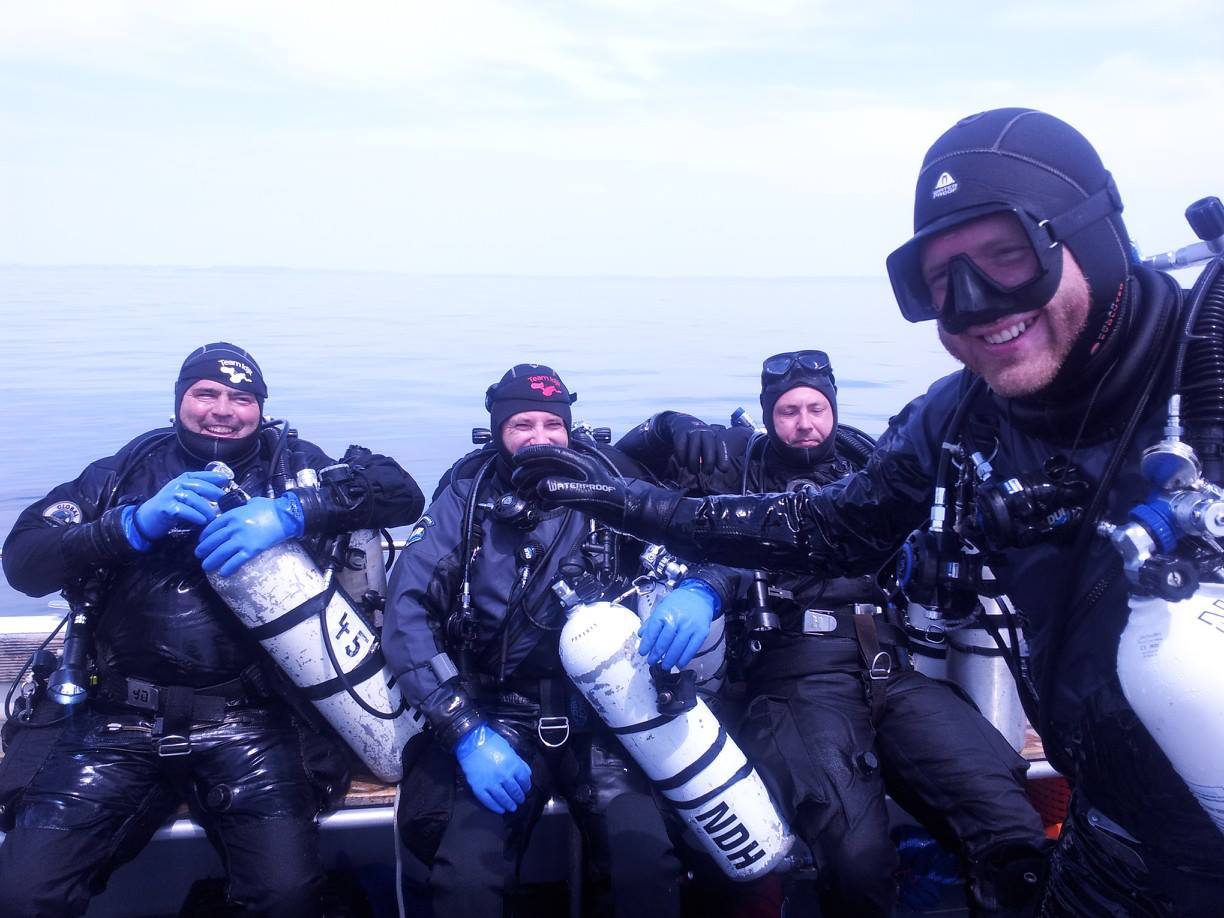
Part 1 – Training
What was once out of reach to everyone but a select few is now part of the mainstream in many sports and diving is no exception. Caves and ocean depths that were until recently accessible only by experts with a lifetime of training can now be touched by those eager amateurs prepared to invest in training and equipment that is now widely available.
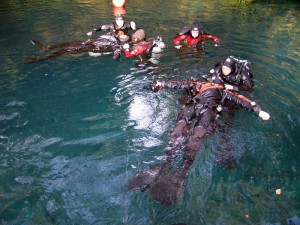 However the increased availability of this specialised training and equipment presents us with a double edged sword. On one side are those who are prepared to make a long term investment and gain the right tools to safely enjoy diving in some incredible and extreme locations not accessible to 99% of the diving community. One the other side there are divers seeking short cut training modelled on mainstream recreational courses. This often results in inadequate training, equipment and experience that can cause them to end up in situations and locations that they will realise they are ill prepared for far too late.
However the increased availability of this specialised training and equipment presents us with a double edged sword. On one side are those who are prepared to make a long term investment and gain the right tools to safely enjoy diving in some incredible and extreme locations not accessible to 99% of the diving community. One the other side there are divers seeking short cut training modelled on mainstream recreational courses. This often results in inadequate training, equipment and experience that can cause them to end up in situations and locations that they will realise they are ill prepared for far too late.
So in a series of three articles I wanted to explore the three key areas of training, equipment and knowledge (TEK) that a diver should carefully consider before starting a progression down this route.
How do you get the Training?
#1 – Do your research. Who is doing the diving you want to do and how did they get trained?
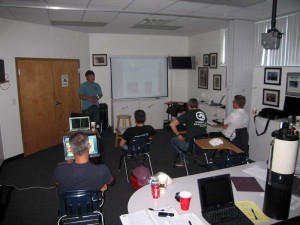 I made a number of early decisions at the start of my technical diving career based on two areas of information. I read voraciously about the sorts of diving I wanted to do. Tales of North East US deep wrecks and North Florida caves in the 80’s & 90’s led me to leading lights of those scenes and then I looked at how they gained their experience and training. Fortunately by the time I started down this route in 2008 things were a little more organised than the early days of deep wreck and cave diving! Today you can easily research the divers, agencies and instructors and find out if, what and how they are doing things appeals to you. There are huge online resources to get your grey matter going, however be aware of polarised ‘internet opinions’ as they will hold you back.
I made a number of early decisions at the start of my technical diving career based on two areas of information. I read voraciously about the sorts of diving I wanted to do. Tales of North East US deep wrecks and North Florida caves in the 80’s & 90’s led me to leading lights of those scenes and then I looked at how they gained their experience and training. Fortunately by the time I started down this route in 2008 things were a little more organised than the early days of deep wreck and cave diving! Today you can easily research the divers, agencies and instructors and find out if, what and how they are doing things appeals to you. There are huge online resources to get your grey matter going, however be aware of polarised ‘internet opinions’ as they will hold you back.
#2 – Get your basic dive skills nailed. You need to be solid before building complex skills.
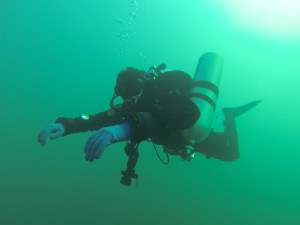 Finding a baseline of where you are today is vital before considering developing complex new skills. You may think your basic skills such as trim, buoyancy control and propulsion are pretty good (everyone’s is right?) but the reality is they probably fall short of the entry point of many technical or cave classes. During training you will be expected to remain in a flat (trim) static position in mid water (not kneeling!) and this can prove difficult even for experienced divers. A technical diver will be able to maintain trim within a 15 degree window, buoyancy with a 1m window even when task loaded such as performing a gas switch, sharing gas or manipulating a valve. Have you ever wondered why the visibility behind you is so bad? So you will also need a range of kicks designed to not disturb silt and be able to manoeuvre in a confined space. The fact is none of these basic dive skills are naturally occurring and you really need an experienced technical diver who is also an instructor to give you structured feedback and develop your basic skills. You should consider a foundational course from an agency with an established technical curriculum such as GUE fundamentals before moving on.
Finding a baseline of where you are today is vital before considering developing complex new skills. You may think your basic skills such as trim, buoyancy control and propulsion are pretty good (everyone’s is right?) but the reality is they probably fall short of the entry point of many technical or cave classes. During training you will be expected to remain in a flat (trim) static position in mid water (not kneeling!) and this can prove difficult even for experienced divers. A technical diver will be able to maintain trim within a 15 degree window, buoyancy with a 1m window even when task loaded such as performing a gas switch, sharing gas or manipulating a valve. Have you ever wondered why the visibility behind you is so bad? So you will also need a range of kicks designed to not disturb silt and be able to manoeuvre in a confined space. The fact is none of these basic dive skills are naturally occurring and you really need an experienced technical diver who is also an instructor to give you structured feedback and develop your basic skills. You should consider a foundational course from an agency with an established technical curriculum such as GUE fundamentals before moving on.
#3 – Be prepared to pay and be prepared to not pass. If you see a ‘cheap’ technical class with a 100% pass rate, run.
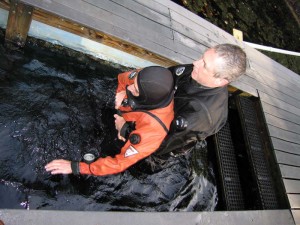 The sorts of class you are looking at are probably quite a bit more money and longer than your basic dive classes. For example most ‘normoxic’ trimix and basic cave classes are between 5-6 days and there will be a gas bill at the end of it! You may even have to travel and pay for boat costs. It can quickly add up and add to personal pressure to ‘perform’.
The sorts of class you are looking at are probably quite a bit more money and longer than your basic dive classes. For example most ‘normoxic’ trimix and basic cave classes are between 5-6 days and there will be a gas bill at the end of it! You may even have to travel and pay for boat costs. It can quickly add up and add to personal pressure to ‘perform’.
Your instructor will also fully understand the environment they are teaching you to dive in and will not accept second best. This means no matter how much you have spent they simply will not pass you if you don’t make the grade.
#4 – Make sure your instructor is an active diver. You want real experience, not training slates.
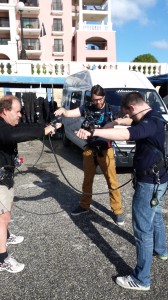 I have already mentioned the cost of training at this level. You are for the most part paying for that instructor’s experience as much you are paying for their time. A good instructor should be diving above the level that they are teaching, so they will be bringing a huge amount of personal diving experience to your class. Many instructors only teach and this brings nothing to this type of diving. The best instructors I know work hard to maintain a balance between being active divers and educators.
I have already mentioned the cost of training at this level. You are for the most part paying for that instructor’s experience as much you are paying for their time. A good instructor should be diving above the level that they are teaching, so they will be bringing a huge amount of personal diving experience to your class. Many instructors only teach and this brings nothing to this type of diving. The best instructors I know work hard to maintain a balance between being active divers and educators.
In the next part of this series I will be looking at the equipment required for technical and cave training. Are you prepared to change your entire configuration right down to your fins?
James teaches exclusively as a GUE (Global Underwater Explorers) instructor for TecLife (www.divelife.co.uk).
Gear News
Go anywhere with Stahlsac
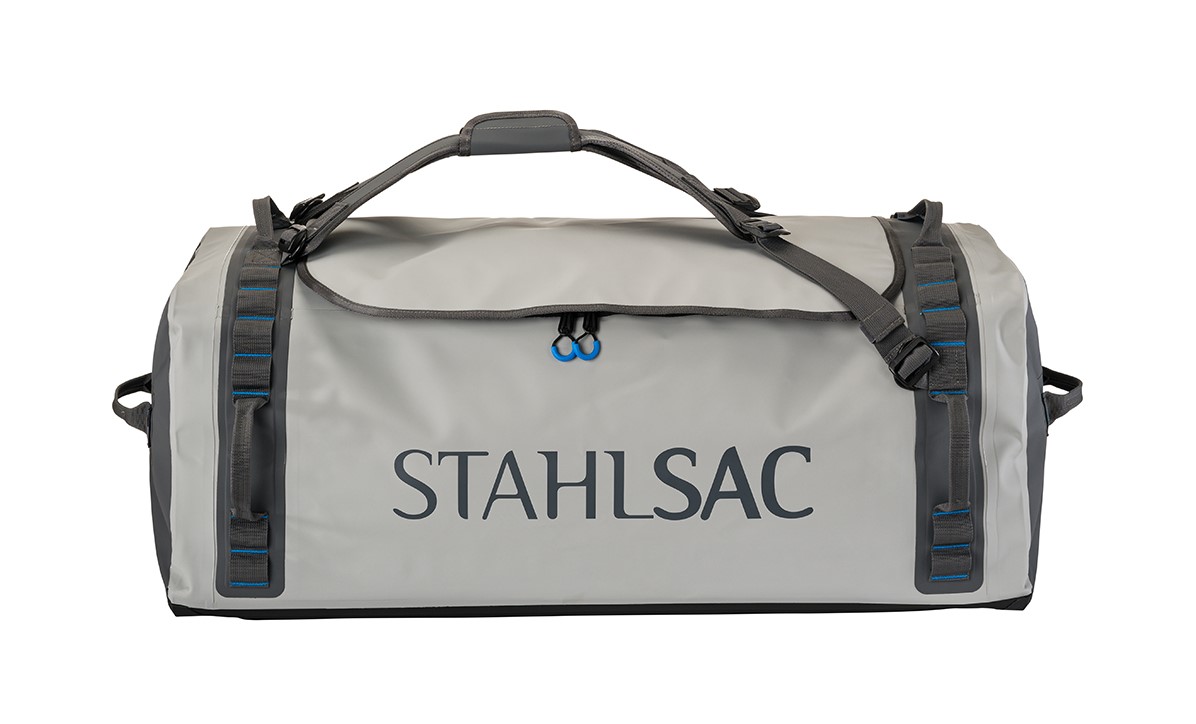
Stahlsac dive bags and travel luggage are built for our community of divers, surfers, kayakers and outdoor explorers who need bags that are constructed with durability, toughness, and 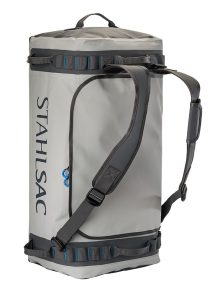 the highest quality the industry has ever seen. We were founded by one man determined to build better watersports and dive bags, and today, that mission is carried on by many. Adventure doesn’t just present itself; it requires discovery. When we design dive bags, we make sure they are tough enough for you to explore in all conditions—warm and cold, wet and dry—to the nearest and farthest reaches of the earth. And for those times you want to push the boundaries of adventure, Stahlsac dive bags make sure you can truly GO ANYWHERE.
the highest quality the industry has ever seen. We were founded by one man determined to build better watersports and dive bags, and today, that mission is carried on by many. Adventure doesn’t just present itself; it requires discovery. When we design dive bags, we make sure they are tough enough for you to explore in all conditions—warm and cold, wet and dry—to the nearest and farthest reaches of the earth. And for those times you want to push the boundaries of adventure, Stahlsac dive bags make sure you can truly GO ANYWHERE.
Abyss Duffels
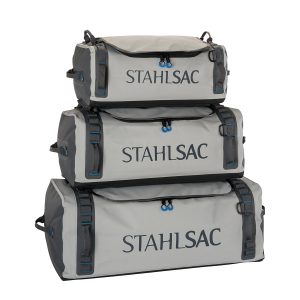 Made to be your partner-in-crime on every adventure, Stahlsac’s Abyss Duffels protects your gear from Mother Nature’s worst. Tough and 100% waterproof with double-TPU nylon material that shrugs off daily wear-and-tear, and RF-welded seams further boost the bag’s potential for lifelong exploring. Get Wet. Get Lost. Go Anywhere with Abyss.
Made to be your partner-in-crime on every adventure, Stahlsac’s Abyss Duffels protects your gear from Mother Nature’s worst. Tough and 100% waterproof with double-TPU nylon material that shrugs off daily wear-and-tear, and RF-welded seams further boost the bag’s potential for lifelong exploring. Get Wet. Get Lost. Go Anywhere with Abyss.
- A weatherproof duffel for trips, travel, and adventure
- Ultra-durable double-TPU nylon protects your gear
- Material repels water and keeps your equipment dry
- RF-welded seams are flush, tough, and waterproof
- Removable straps transform duffel into backpack
- Zippered internal stow compartments carry essentials
- External zippered flap is easy to open and close
- Welded external handles make transporting a breeze
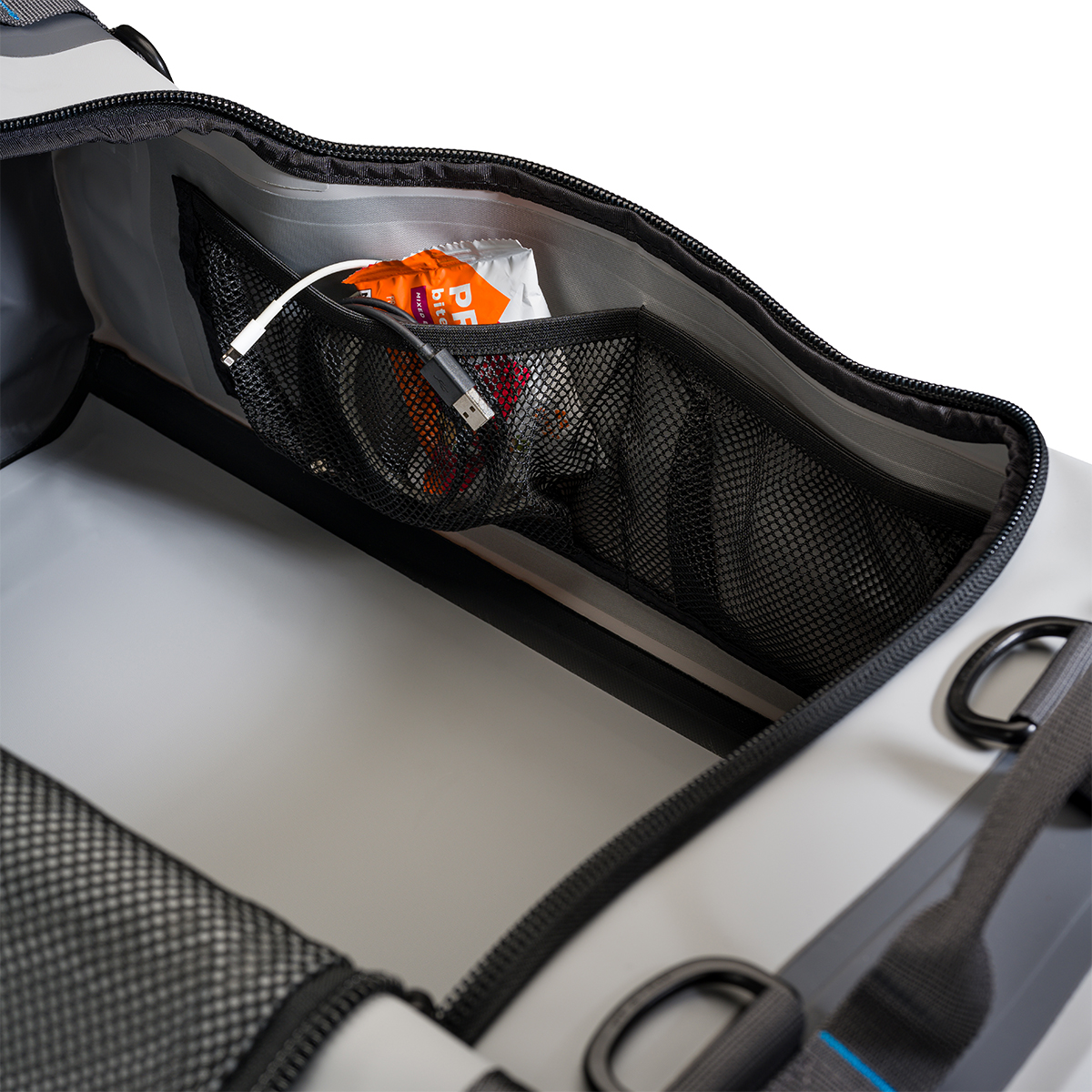
Panama Mesh Backpack
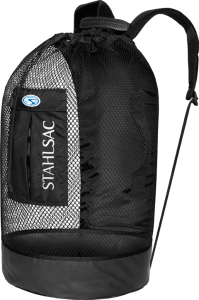 The most copied design in scuba diving, the Stahlsac Panama Mesh Backpack is the “original” design and features two high-density foam padded shoulder straps, extra durable polyester mesh, duffel bag handles and our unique zippered dry pocket inside that combines with a wet pocket outside. The bottom’s built from reinforced 18-gauge PVC nylon to combat the wear and tear of your active coastal lifestyle, and, as a bonus in every bag, we supply a 12″ x 12″ mesh drawstring satchel for extra stowing utility. Pack up your beach kit and go.
The most copied design in scuba diving, the Stahlsac Panama Mesh Backpack is the “original” design and features two high-density foam padded shoulder straps, extra durable polyester mesh, duffel bag handles and our unique zippered dry pocket inside that combines with a wet pocket outside. The bottom’s built from reinforced 18-gauge PVC nylon to combat the wear and tear of your active coastal lifestyle, and, as a bonus in every bag, we supply a 12″ x 12″ mesh drawstring satchel for extra stowing utility. Pack up your beach kit and go.
- Density foam padded shoulder straps
- Outside wet/dry pockets
- 2 Carry handles
- Tough, snag-resistant polyester mesh
- Reinforced PVC bottom
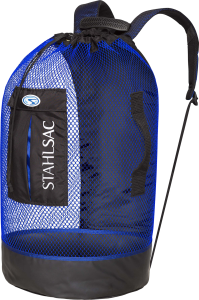
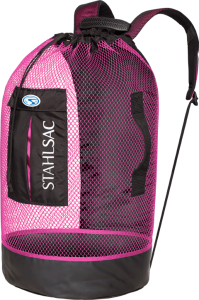
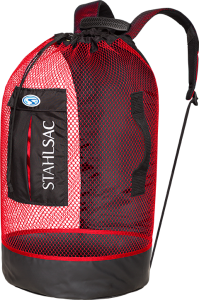
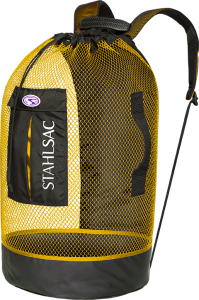
For more information about Stahlsac bags, visit www.stahlsac.com/dive-bags.
Sea & Sea is the home of Stahlsac and other leading diving brands in the UK.
Blogs
EXCLUSIVE: Jeff Goodman interviews Mark Spiers, CEO of New Scuba Diving Training Agency NovoScuba

In a video recorded exclusively for Scubaverse.com, Jeff Goodman interviews Mark Spiers, CEO of new scuba diving training agency NovoScuba.
Find out more about NovoScuba at www.novoscuba.com.
-

 News3 months ago
News3 months agoCapturing Critters in Lembeh Underwater Photography Workshop 2024: Event Roundup
-

 Marine Life & Conservation Blogs3 months ago
Marine Life & Conservation Blogs3 months agoCreature Feature: Swell Sharks
-

 Blogs2 months ago
Blogs2 months agoMurex Resorts: Passport to Paradise!
-

 Gear Reviews3 weeks ago
Gear Reviews3 weeks agoGEAR REVIEW – Revolutionising Diving Comfort: The Sharkskin T2 Chillproof Suit
-

 Blogs3 months ago
Blogs3 months agoDiver Discovering Whale Skeletons Beneath Ice Judged World’s Best Underwater Photograph
-

 Gear Reviews3 months ago
Gear Reviews3 months agoGear Review: Oceanic+ Dive Housing for iPhone
-

 News2 months ago
News2 months agoPADI Teams Up with Wellness Brand Neuro to Drive Ocean Change and Create a Blue State of Mind
-

 Marine Life & Conservation2 months ago
Marine Life & Conservation2 months agoSave the Manatee Club launches brand new webcams at Silver Springs State Park, Florida

















